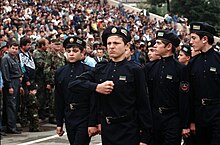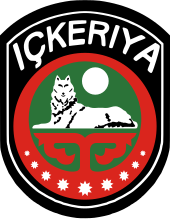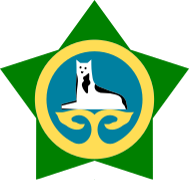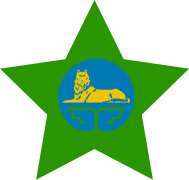|
Armed Forces of the Chechen Republic of Ichkeria
The Chechen National Army (Chechen: Noxçiyn Respublika Içkerin Theman Niċq̇aş, Нохчийн Республика Ичкерин ТӀеман НицӀкъаш; Russian: Национальная Армия Чеченской Республики Ичкерия, romanized: Natsionalnaya Armiya Chechenskoy Respubliki Ichkeriya) or Chechen Armed Forces are the united militarized formations of the former de facto Chechen Republic of Ichkeria. On October 15, 2022, the Armed Forces of the Chechen Republic of Ichkeria were officially resurrected in Ukraine by the Government of Ichkeria in exile, with a center being on the units contributing to the Chechen involvement in the Russian invasion of Ukraine, such as Separate Special Purpose Battalion,[1] which has seen combat in Bakhmut and Belgorod. Defence Ministers of Chechnya
BranchesGround ForcesDudayev spent the years from 1991 to 1994 preparing for war, mobilizing men aged 15–55 and seizing Russian weapons depots. This was seen as a bid to prop up Chechnya's independence and sovereignty.[2] Major weapons systems were seized from the Russian military in 1992, and on the eve of the First Chechen War they included 23 air defense guns, 108 APCs and tanks, 24 artillery pieces, 5 MiG-17/15, 2 Mi-8 helicopters, 24 multiple rocket launchers, 17 surface to air missile launchers.[3] The ground forces counted 10,000 troops in December 1994, rising to 40,000 soldiers by early 1996.[3] Structure:
Air ForceAs a result of the withdrawal from the Chechen Republic in 1992, parts of the Russian army were left with almost all weapons, including aircraft and air defense systems. At the Kalinovskaya Airbase, the Armavir Aviation School left 39 combat training aircraft L-39 Albatross, 80 L-29 Dolphin, 3 MiG-17 fighters, 2 MiG-15UTI training aircraft, 6 An-2 aircraft and 2 Mi-8T helicopters (tail numbers "23 Yellow" and "39 Yellow"). The military also had 94 L-29 trainer aircraft, 52 L-39 trainer aircraft, 6 An-22 transport aircraft, and 5 Tu-134 transport aircraft.[3] Most of the Chechen aviation equipment was destroyed at airfields in the very first days of the Chechen campaign. The air defense of the air bases consisted of 10 Strela-10 air defense systems, 23 anti-aircraft artillery installations of various types and 7 Igla MANPADS. In addition, according to some media reports, the units of the Mujahideen who fought in Chechnya had a certain number of American-made Stinger MANPADS.
BasesThree air bases were used to base the Chechen aviation forces:
It was also reported about the ongoing work on the adaptation of several sections of highways for the basing of aircraft. National Guard The Chechen National Guard (Chechen: Nóxçiyn Respublik Içkeri Qoman Gvardi; Russian: Национальная гвардия Чеченской Республики Ичкерия) was a major formation in Chechnya and its military. On March 13, 1997, President Aslan Maskhadov, established the National Guard of the Chechen Republic of Ichkeria, which was to become the only regular armed formation, on the basis of the Armed Force s of the CRI. Brigadier General Magomed Khanbiev was appointed commander of the CRI National Guard. The number of the National Guardsmen was 2,000 and it included the autonomous Presidential Guard, which was directly subordinate to the President. In addition, individual battalions were subordinate to the General Staff and the chairman of the government.[4] Organizational structure
Other paramilitary/security formations
See alsoPublications
References
|
||||||||||||||||||||||||



